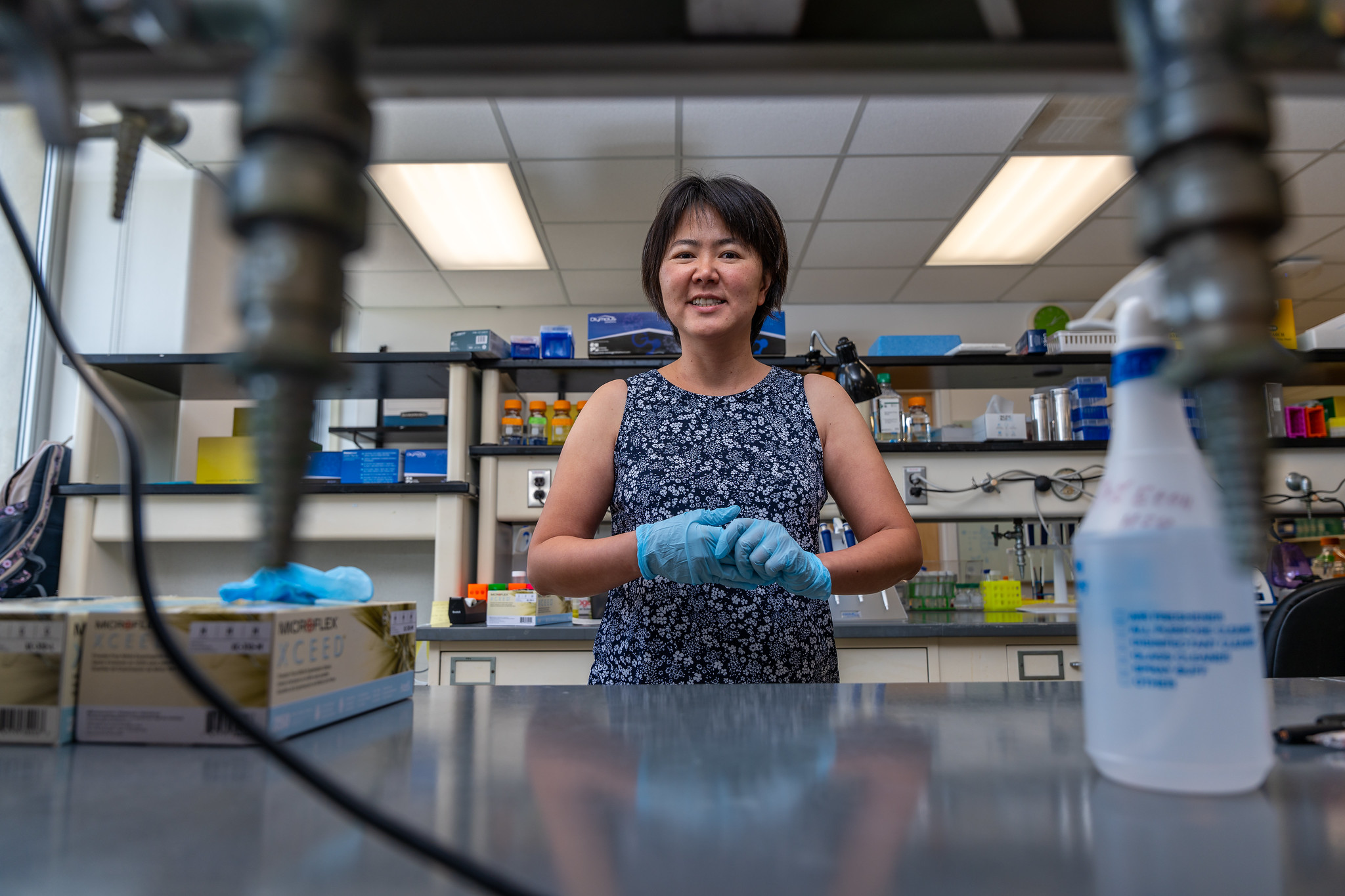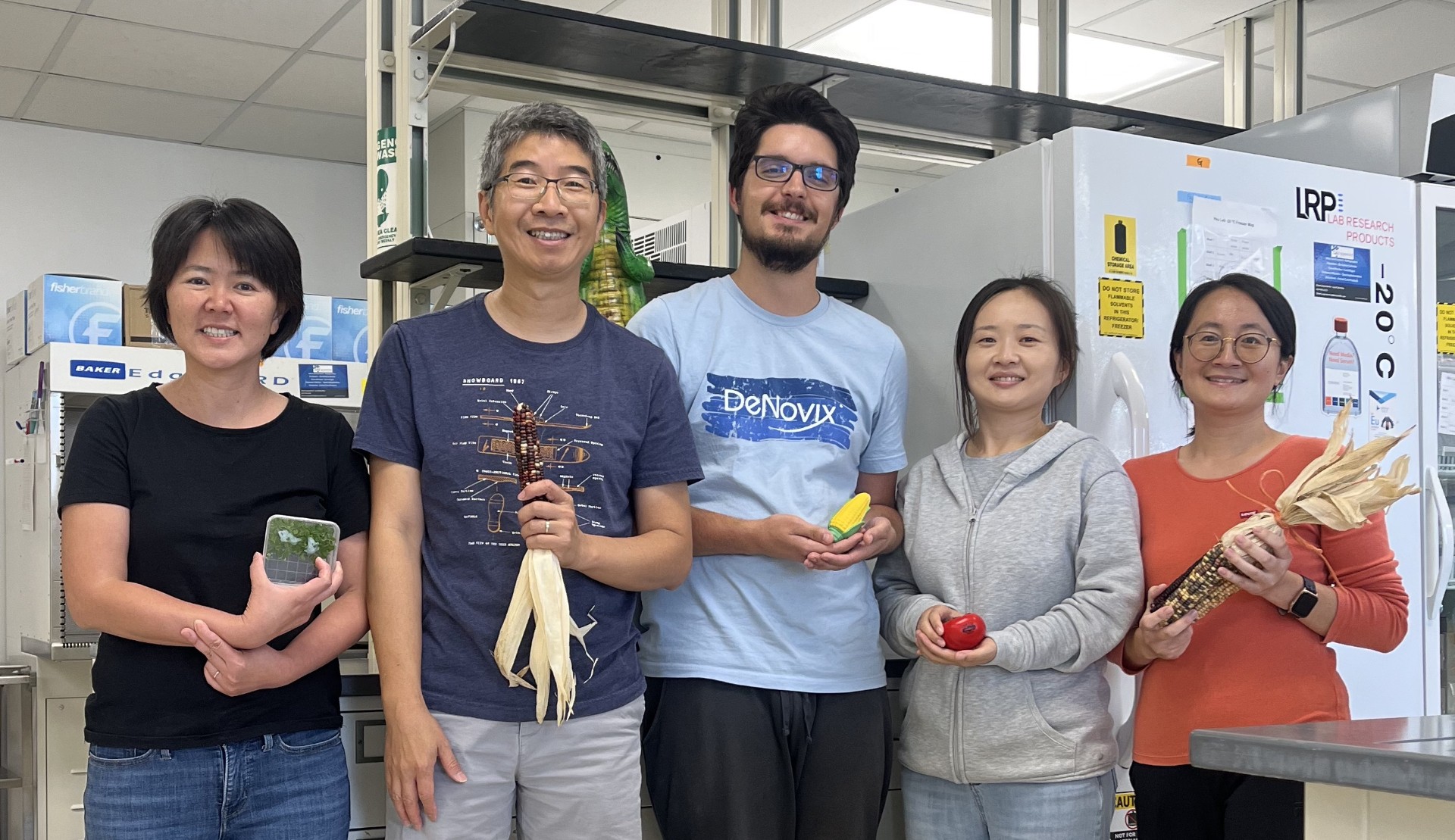Michigan State researcher Polly Hsu has been awarded two grants totaling nearly $3.7 million to continue her pioneering exploration of gene expression regulation — research with exciting applications for plant resilience and human health.
These include a four-year grant from the National Science Foundation, or NSF, and a five-year award from the National Institutes of Health, or NIH.
In the world of molecular biology, the flow of information is a one-way street.
Genetic instructions in DNA are transcribed into messenger RNA, or mRNA. These molecules are then translated into proteins that carry out vital cellular functions.
Exactly how, when and where genetic information is “read” during this process has huge implications for organisms, their health and interactions with the environment.

The first grant from the NSF’s Plant Genome Research Program will expand the Hsu lab’s study of open reading frames. More commonly known as ORFs, these are stretches of mRNA with the potential to create proteins when read by cellular machinery called ribosomes.
Hsu is an expert on this complicated genetic dance. Sometimes, mRNA can be read by multiple ribosomes. Or ribosomes might hop on and off mRNA more than once.
“Using a technique known as ribosome profiling, we’re able to find where ribosomes bind to mRNA, which creates a distinct pattern when an ORF is translated into proteins,” Hsu said, who is an assistant professor in the College of Natural Science’s Department of Biochemistry & Molecular Biology·
“Through this process, we can identify novel proteins and new translation events across the genome.”
The latest NSF grant, which is in collaboration with Professor Justin Walley of Iowa State University, an expert on proteomics, will investigate the wide variety of ORFs that are found in plants but whose functions aren’t fully known.
Studying these mysterious and potentially powerful “unannotated” ORFs can reveal new ways that plants control their genetic activity, opening the door to developing heartier crops.
The grant will expand Hsu’s work to study hidden ORFs in plants representing a broader genetic diversity across more species, including varieties of rice, maize, tomato and Arabidopsis, a widely-used model organism. Thousands of ORFs have been identified in tomato and Arabidopsis alone, Hsu said.
“We’ll be making a lot of discoveries and generating new tools. We’re asking ourselves: what new proteins will we find, and what are they doing?”
In addition to this foundational research, the group’s work will lead to public educational opportunities at MSU’s 4H Children’s Garden that feature model plants and proteins.
“I have two boys and take them to the 4H Garden quite a lot, so it’s something close to me,” Hsu said, who’s also a faculty member in MSU’s Molecular Plant Sciences Program.
“We hope to show model crops at different stages of growth so children can interact with them. I’m looking forward to being able to say, ‘This is the plant we’re working on in our lab!’”

A no-nonsense study
Hsu has also received a prestigious Maximizing Investigators’ Research Award, or MIRA, from the NIH. The focus of this award is to dig deeper into the impact of upstream open reading frames, also known as uORFs.
Sometimes, mRNA possesses multiple ORFs that ribosomes can read to produce proteins.
Since ribosomes travel in one direction along mRNA, they’ll translate the first ORF they encounter. If an ORF is unexpectedly ‘upstream’ of another, that means a primary and likely more crucial ORF can go unread.
The presence of uORFs has been linked to numerous diseases and other biological problems.
“Because uORFs are so short, ribosomes will stop translating very early on. This leaves a large portion of mRNA unread,” Hsu explained.
“The cell begins thinking, ‘Has something gone wrong with the mRNA?’”
This protective phenomenon, known as nonsense-mediated mRNA decay, or NMD, has been well-studied in humans. A wide range of diseases from cancers and blood conditions to neurological disorders have been linked to mRNA mutations that successfully slip past NMD.
Leveraging her expertise in plant genomics, Hsu’s MIRA research will explore the surprising fact that uORF mRNAs in Arabidopsis seem to largely evade NMD, even though these uORFs still lead to decreased protein levels.
“While uORFs are expected to often trigger NMD in humans and animals, our data shows that in plants, this isn’t the case,” Hsu said.
“Plant uORFs are doing something very different compared to their counterparts.”
By studying how plant uORFs systematically evade NMD — or are being compensated through some other mechanism — Hsu’s work will help push the boundaries of our understanding of uORFs in humans as well.
These insights can potentially help develop novel human health therapies.
This story was originally published by the Department of Biochemistry and Molecular Biology.
About the MSU Innovation Center:
The MSU Innovation Center is dedicated to fostering innovation, research commercialization, and entrepreneurial activities from the research and discovery happening across our campus every day. We act as the primary interface for researchers aiming to see their research applied to solving real-world problems and making the world a better place to live. We aim to empower faculty, researchers, and students within our community of scholars by providing them with the knowledge, skills, and opportunities to bring their discoveries to the forefront.
Through strategic collaborations with the private sector, we aim to amplify the impact of faculty research and drive economic growth while positively impacting society. We foster mutually beneficial, long-term relationships with the private sector through corporate-sponsored research collaborations, technology licensing discussions, and support for faculty entrepreneurs to support the establishment of startup companies.
Is your company interested in working with MSU’s vast team of genetic researchers? Click Here.
